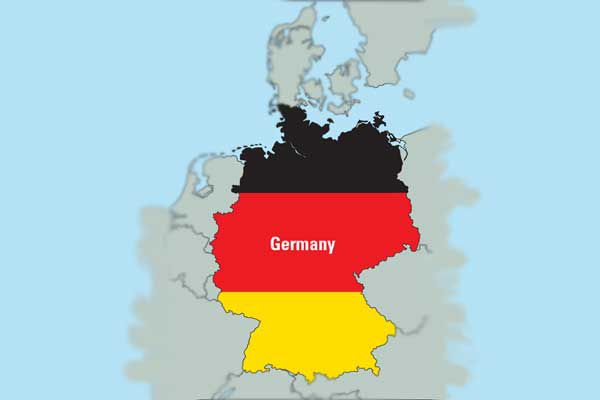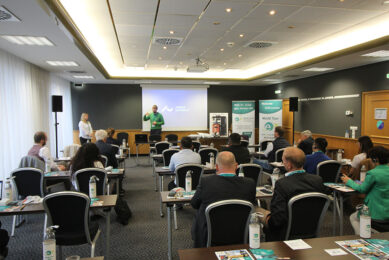Poultry production in Germany on the increase

The German poultry industry has seen an important growth in production capacity. This is at the cost of imports and other animal protein sources.
By Wiebe van der Sluis
Although Germans used to prefer pork above poultry meat, the latter is currently gaining ground. Poultry meat is now more popular than ever among Germans. An increasing number of consumers even prefer poultry above other meats because of its high protein and low fat content. The consumption of meat has been increasing in Germany for several years (by 3% since 2005) and most of the increase is coming from poultry. Since 1990 the consumption of poultry meat has increased by about 65% and takes around 20% of the total meat intake. Still, the per capita consumption in 2011 was only 18.9 kg per year, which, compared to Brazil or the USA (about 50kg/cap/y), is still fairly low.
A farmers business
The total amount of poultry meat consumed in Germany in 2011 was 1.54 million tonnes. An increasing amount of this meat is from domestic production and has been produced by 6,457 farmers (4,532 broiler and 1,925 turkey farms) of which the majority have a small scale business: 78% has less than 10,000 birds and only 8% has 50,000 to 200,000+ birds. Germany’s gross domestic production in 2011 was 1.66 million tonnes, which would be enough to cover the country’s needs. However to balance the specific needs of the consumer, some poultry parts have to be exported and other parts imported. Over the years, German poultry meat exports and imports have increased signifi cantly, despite a self suffi ciency rate of 107.7%.
The demand for poultry meat is increasing, but so are consumer demands concerning food safety and animal welfare.
The conditions for animal welfare are clearly defined. Some parts of German regulations are even stricter than EU guidelines deem to be necessary. For instance, in Germany the maximum stocking density for broilers is 39 kg/m2, while in other EU Member States, under specifi c conditions farmers may keep them up to 42 kg/m2.
More eggs produced
Germany also used to be an egg importer and still continues to be. Over the years the domestic production dropped, especially as a result of new legislation regarding environment and animal welfare, in particular the EU cage ban. In 2011 however, the laying hen market recovered and showed a considerable increase in output. With a total egg production of 12.53 billion eggs the country produced 17.3% more than in 2010, but 1.6% less than in 2008. The December survey of the Federal Statistical Office showed that there were 1,224 farms with a capacity of more than 3,000 hens, keeping 33,977 million layers. This was 4,116 million layers above the number counted in December 2010.
The ban on conventional cages changed the way layers are kept completely. The survey showed that 62.9% of all hens are kept in some type of aviary or barn housing system, while, 14.4% of the hen places are for free range and 7.4% for eco egg production.
During the transition period between cage and cage free production, the supply of German eggs decreased considerably. The self-sufficiency level dropped even to 55.1%. However as of 2010 the domestic production increased and the import volumes dropped. In 2011 the import of eggs and egg products was 8.57 billion eggs, which was 17% less than in 2010. Total export rose by 9.1% to 2.69 billion eggs. The result was an increase of the self sufficiency level to 66.1%, a figure which is expected to increase in 2012. Although the per capita consumption dropped from 214 in 2010 to 212 in 2011 it is expected that the German market will remain dependent on imports.
Future is unclear
The forecasts for the German poultry industry are, like anywhere else, not that positive. Despite the positive development in the domestic demand for poultry meat and eggs produced in Germany, the cost of production is rapidly increasing. The dramatic rise in feed prices in recent months is creating big problems for most farmers. It may even drive them to the brink of ruin, say several leaders of the German poultry industry. This is a common problem for all poultry meat and egg producers around the globe and requires a dramatic increase in consumer prices. What eff ect that will have on demand and trade is to be seen.
| EuroTier 2012 larger than ever Four show days may not even be enough for this year’s visitors of EuroTier, held in Hanover, Germany, from 13-16 November. The 2012 edition of Europe’s most extensive livestock event promises to be the largest and most international edition ever. Besides a record number of exhibitors, there will be plenty of attention given to poultry production at the World Poultry Show. Over 2,300 exhibitors from 50 countries have booked exhibition space at Hanover’s Exhibition Grounds. With 250,000 m2 of exhibition space, the show has grown by more than 30% since its last edition in 2010. The international contingent at the biennial show will be over 1,000 exhibitors, which is a 25% increase in comparison to the 2010 edition. This means that nearly half of the exhibitors will come from outside Germany. The Netherlands again leads the fi eld with 176 companies. Strong exhibitor participation will also come from France (134), Italy (84), China (75), Denmark (69), Spain (63), United Kingdom (55), Austria (52), Belgium (51) and the USA (36). The show will address the pig, cattle and poultry sectors, with every possible leading company in the fi eld of genetics, housing, climate control, animal health, nutrition and feed additives. In addition, attention to bioenergy will be available at the ‘BioEnergy Decentral’ show. Highlighting innovations, an independent jury will be awarding gold and silver medals. On the Monday, November 12, the day before the show, the EPC (European Poultry Club) in partnership with the ZDG (German Poultry Association) and DLG (German Agricultural Society) will held a special seminar on poultry production. The meeting will start at 14:30 and has the theme: “10 Years in Motion; European poultry producers facing the future”. Various internationally renowned speakers will share their views on current issues and future challenges in poultry production in Europe as well as in the rest of the world. |













